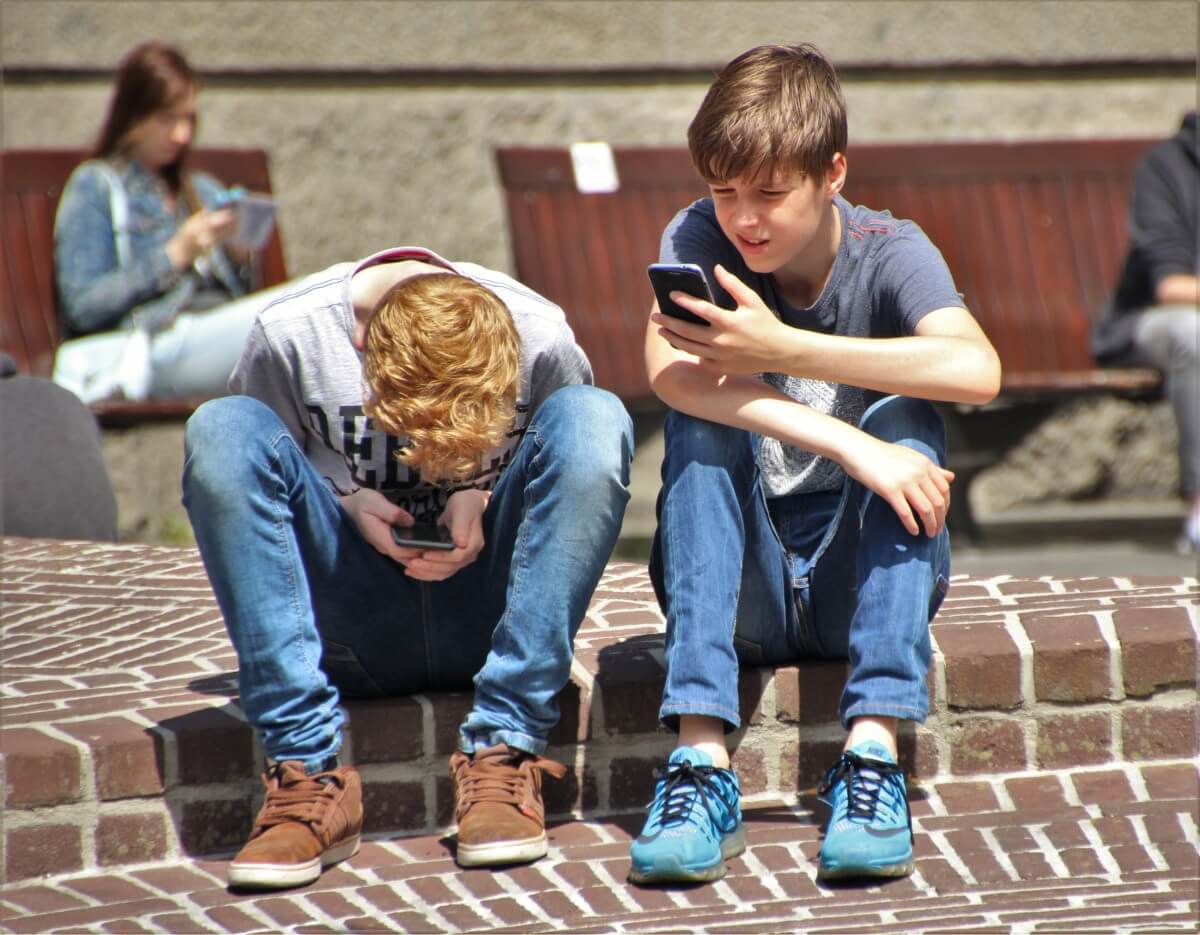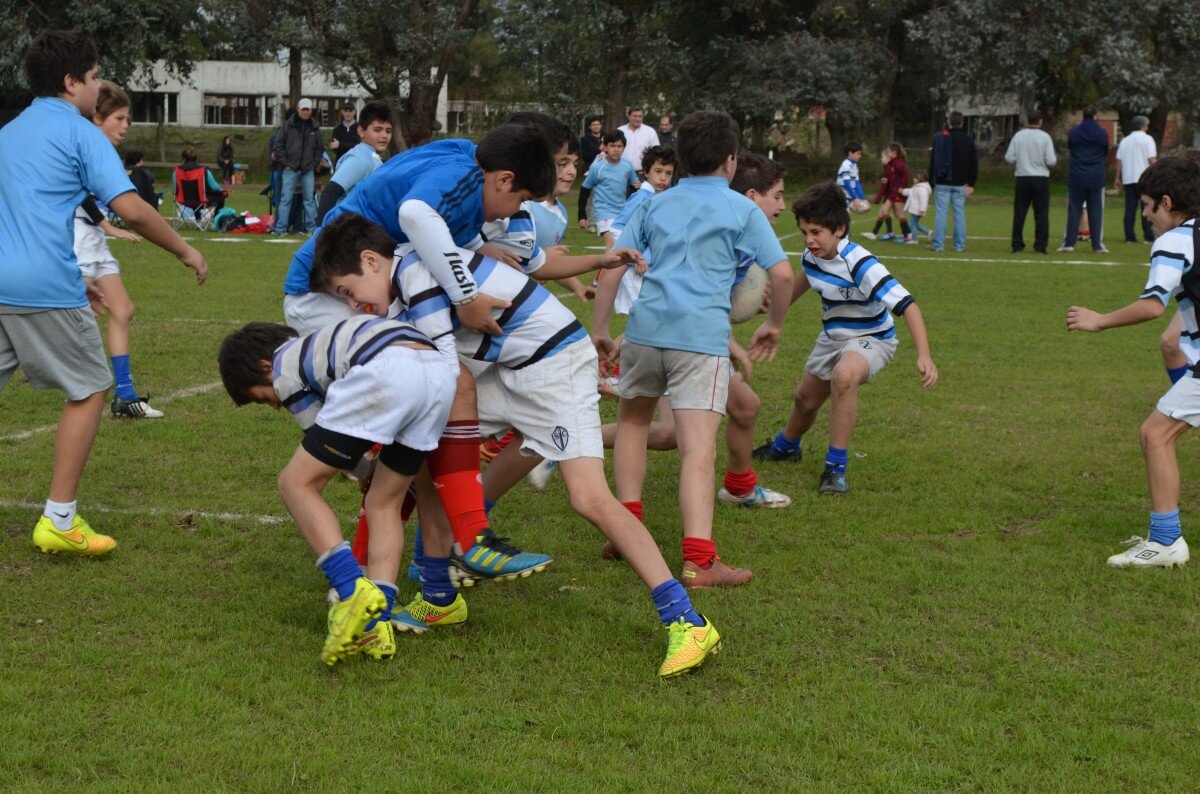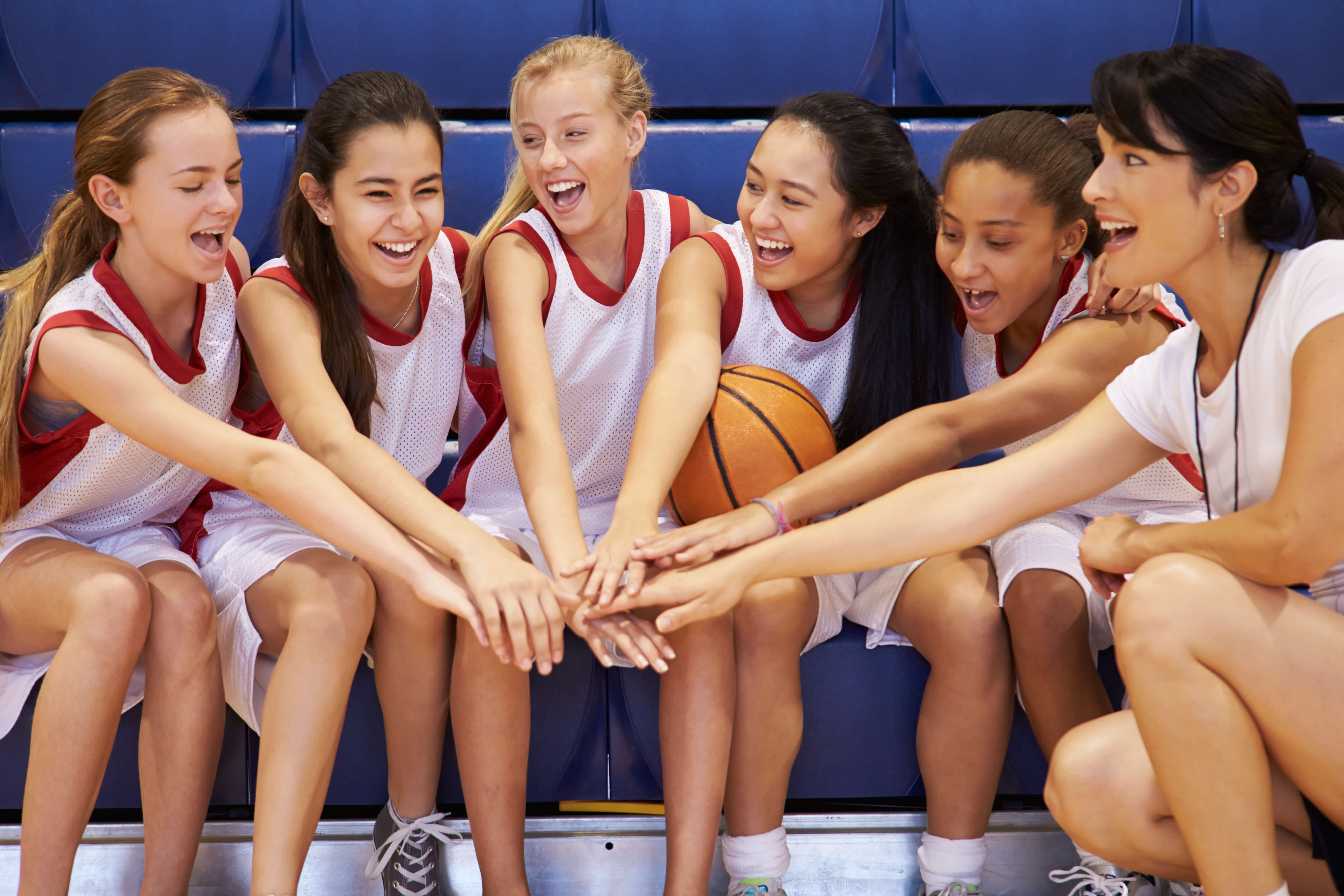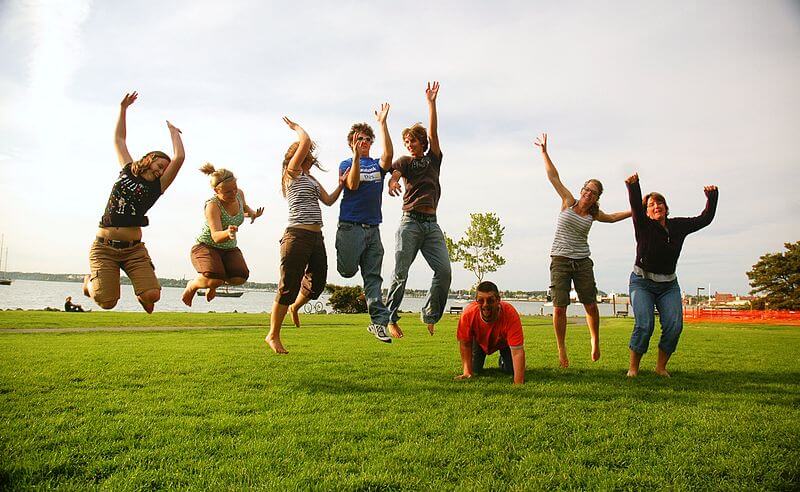
Getting and keeping school kids motivated in physical education is not the easiest task. Particularly for novice physical education teachers, that might seem to be “mission impossible.” Kids come to school carrying different cultures, different backgrounds, and different beliefs. Some kids are athletic, whereas others don’t like playing sports or participating in physical activities. Some of them enjoy competitive sports and others feel uncomfortable getting physical, for several reasons (Grieser et. all., 2006).
The Theory of Self-Determination (Deci & Ryan, 2000), which states that behavior is self-determined or voluntary, includes three types of motivation: intrinsic motivation, extrinsic motivation, and amotivation (Moreno-Murcia, González-Cutre, & Chillón, 2009). One of the challenges for a physical education teacher is to be able to distinguish between the three types of motivation. This is an important factor as it helps the teacher identify the students’ motives in physical education. Extrinsic motivation derives from getting an external reward, such as a trophy, a certificate, a trip, or a social reward such as recognition, praise, a given title, and so on. The intrinsic motivation arises from within an individual and can be identified as participating in an activity because it is satisfying the person; the internal drive toward a particular behavior. Amotivation, the lowest level of self-determination, refers to the absence of the first two types (intrinsic or extrinsic motivation) representing a total lack of self-determination (Deci & Ryan, 2000). That is, amotivation represents this category of students who are not willing to participate in class for any reason. Understanding what best motivates the students, requires awareness of both extrinsic and intrinsic motivation that regulate students’ behavior.

Intrinsic motivation produces a long-lasting commitment to exercise allowing the person to improve health, develop skills and abilities and decrease daily stress (Ryan & Deci, 2017). Intrinsically motivated students enjoy putting forth the effort to learn as they find it enjoyable to participate, improve and develop skills. Probably, physical education teachers should help students shift focus from long-term external outcomes, which sometimes seem to be unreachable and too far away from students, to more positive short-term internal outcomes.
Although extrinsic motivation may partially work for some students, such as when they want to lose weight or to get in better shape, however, body-related motives are not usually sufficient to sustain regular physical activity. A physical education teacher may offer prizes and trophies to students for completing the offered activities, but these external motivators will soon lose their strength in students and the teacher will be left trying to find alternative rewards to satisfy the students again and keep their interest for the lesson high. As mentioned earlier, motivating every single student during their teenage years in each class to try their best and enjoy the learning process may seem unrealistic in the beginning; however, there are ways teachers may build their students’ intrinsic motivation in physical education. These ways are discussed below:

Involve students in the teaching-learning process
Teachers may empower their students by involving them in the teaching-learning process. Teachers facilitate the learning process and allow shared decision-making about learning with students. Student-centered classrooms involve students in all phases of the teaching-learning process; that is planning, implementation, and assessment. Assessment processes should be used to promote learning and may include both self-evaluation and peer-evaluation strategies. When the components of student-centered teaching are well balanced, children are able to retain the knowledge and develop skills for lifelong learning. Placing students at the center of their own learning obviously requires collaboration and lots of patience from the teacher. The teacher offers a great chance for the students to understand why, what, and how learning experiences in physical education take shape.
Why is about relevance. When students understand the value of the activity they are asked to do, they will be willing to invest effort in that. Students usually ask why they need to do a specific activity. Listening to the teacher say for example “It’s part of the curriculum” or “Because I say so” does not help in that way.
What skills and concepts will be taught in class involves students choosing the content of the lesson, according to their interests. Having a discussion with the students at the beginning of the year to explore what they like to do, would help the teacher align activities with their interests.
How learning will be demonstrated to students by providing a variety of choices, according to their knowledge and understanding. Teachers are called to use several ways that are attractive to children, including technology and web-based demonstrations.
Student-centered pedagogy encourages students to deeply engage with the taught material, develop a dialogue, and reflect on their progress (Weimer, 2002). As students gain greater access to information, the teacher’s role becomes even more important since he’s called to guide the application and assimilation of that information into real-world problems, with which students make the connection. Therefore, instructional design should focus on providing tools and learning environments for helping learners interpret the multiple perspectives of the world in creating their own world (Karagiorgi & Symeou, 2005).

Create a positive and caring learning environment
Building caring relationships with students in physical education is a particular challenge for teachers (Constantinides & Silverman, 2018;). An incident during a physical education class observation describes the whole idea; a middle school kid fell down and hurt his ankle, during a basketball scrimmage. Immediately, the teacher stopped the class and went to him to see how he could help. It was obvious that the student experienced an ankle sprain, so the teacher had to give first aid and keep the student away from practice. The student was impressed, since, till that day, no one showed so much compassion and concern for him, according to his continuous statement in the gym.
Through student-teacher interaction, students should sense they are valued, supported, and respected. Arriving early for class, or making yourself available to students after class provides an opportunity to engage small groups of students in conversation, understand how students think, and learn more about themselves. Beyond that, effort should be made to learn students’ names and use them in class. Although it’s not easy to learn all names at once, after completing the second week of classes, a teacher should be able to know most, if not all students’ names. Calling a student by his/her name makes the student feel accountable and that’s important in a classroom. Bergmann (1990) found that students value the caring behaviors of teachers who demonstrate respect for, confidence, and interest in their students. Halldorsdottir (1990) identified that caring behavior, from a student’s perspective, included professional competence, genuine concern for the student, professional commitment, a positive personality, mutual trust, a collaborative relationship in class, promoting feelings of self-acceptance and self-worth, and personal and professional growth. On the other hand, uncaring behaviors in class are described as a lack of professional competence or concern for the student, a demand for power and control, destructive behavior, trustworthiness, and emotional distance.
Communicating with students in an authentic way fosters caring and makes that teacher different in students’ eyes. Responding to questions with enthusiasm and showing that you really want to listen, makes the students feel comfortable to ask further questions, or get involved in a discussion. When teachers share their own experiences and ask for the student’s opinions, this really helps to “break the ice” and built up a good relationship with students. During instruction, a teacher’s positive feedback promotes a caring environment as well. The students are kept accountable for their effort to learn, even if they are not performing a skill in the correct way. The fact that the teacher is paying attention encourages the student to continue the effort and strive to achieve more goals.

Clarify expectations
A component in motivating school children is the ability to specify what is expected from students. Physical education teachers need to be clear as far as the learning outcomes for the activities offered in school physical education. Especially if they succeed in building learning outcomes around intrinsic goals (i.e. learning, health, student relationships), rather than extrinsic (i.e. getting good grades, winning a game), is more possible that students will always engage in class activities and will give more value to the lesson (Fernandes & Vasconcelos-Raposo, 2005). In addition, rules of the class and assessment policies must be communicated clearly to all students (Sierens et al., 2009) so that there will be no confusion. Making expectations clear to understand, enables students to have a clear picture in their minds as far as what to do, without asking questions.
Research suggests that when teachers introduce specific criteria for success (explicit task presentation) there is a high percentage of on-task behavior during the lesson and when teachers provide little or no information (implicit task presentation) students are more likely to modify the tasks as they go along (Tousignant & Siedentop, 1983). Similarly, Silverman et al. (1985) suggest that students may fail to complete a task as intended by the teacher when expectations for participation are not clear or when they are not held accountable for the intended outcomes. It would seem then that teachers’ instructional decisions and how these decisions are implemented during the lesson largely influence student time-on-task and quality engaged time in physical education.

Present activities that build on students’ interests
Physical educators need to be caring, compassionate, and committed to taking the time to teach so that all students can acquire the skills and knowledge to be effective participants in physical education classes (Constantinou, 2016). Showing that students’ interests are very welcome to be discussed and addressed in class, is greatly appreciated by the students. Furthermore, explaining the benefits they will have from the activities offered, helps students understand that their goals will be achieved easier participating in the activities offered in class. Many times, students are negative when the teacher announces the topic of the day, even if they have no idea or never dealt with it, however, the teacher needs to be patient and connect class activities with what students actually do during their free time in the afternoon. The following dialogue is just an example: “John, I saw you in the park cycling yesterday. Was it fun?” “Yes, it was, but I need to do that more often because I get tired easily.” “Well, today’s class is about fitness. And together, we will practice ways to make our body able to last longer in several activities, such as cycling that John likes, dancing, and playing sports.”
Make students feel important
In every class, student-teacher interaction should clearly demonstrate that students are valued, respected, and supported whenever needed. It’s not rare during the lesson to hear students sharing their feelings and thoughts with the teacher. Teachers who demonstrate interest and will to hear students’ thoughts and interests, make them feel important in the class (Cox, Duncheon & McDavid, 2009). Especially for low-skilled students or students with low self-esteem, this is extremely important, since it shows that teachers do not interact only with high-skilled students, but with each and every student in the classroom. That helps students stay engaged with class activities, which is an important goal in physical education. Studies in the past that investigated accountability have shown that teacher monitoring is related to student behavior (Hastie & Saunders, 1990) and that accountability plays an important role in physical education (Hastie & Saunders, 1992). Based on the above research that suggested a relationship between student learning and the way teachers structure and present tasks and holds students accountable (Doyle, 1983), Silverman, Kulinna, & Crull (1995) found similar results in physical education classes.

Allow time for appropriate practice
Teachers need to allow enough time for appropriate practice. How instructional time is used is one thing to consider. The amount and quality of student practice is another one. Both, however, are related to student skill learning in physical education. When teachers allocate enough time for student practice and students are engaged with the subject matter, greater learning occurs (Silverman, 1993). In addition, research has indicated that beyond time, how students actually use that time for individual practice and whether the practice is appropriate to their skill level is strongly related to skill development (Silverman, 1990). When teachers structure time for practice and class is organized so students have a number of appropriate practice trials it is highly likely they will progress and learn the skills being taught. In such a way, students get motivated to stay engaged.
Provide positive experiences to students
Students who have positive experiences in physical education may want to continue those activities both in school and in the afternoon (Gucciardi & Jackson, 2015). On the other hand, students with negative experiences, usually these students that are not successful, may not enjoy the lesson (Subramaniam & Silverman, 2002) and may not want to continue participating. Since active children are more likely to become active adults (Bar-Or et al., 1998) providing positive experiences in physical education classes has the potential to encourage children to be active as children and as adults, with many health benefits such as decreasing the threatening prevalence of obesity (Constantinides, 2013).
Demonstrate effective class management skills
Physical education teachers that allow time for appropriate practice and provide positive experiences to students are usually characterized by effective managerial skills. Before students enter the gymnasium, these teachers have already thought about the activities to be taught, the length of each activity, the organization of the students and the equipment, students’ roles, etc. (Anderson, 1989). Furthermore, in class, they use efficient and consistent organizational techniques to be used for setting up and taking down the necessary equipment, decisions about the spatial organization of each activity, and specific formation (e.g., a quick grouping of students) techniques that help in class organization and decrease the time needed for transitions (Housner & Griffey, 1985). As a result, their classes are organized efficiently and run smoothly (Siedentop et al., 1994).

Focus on skill learning, not the result of the action
Another component that builds on a learning motivational climate, is the ability of the teacher to focus on skill learning itself and not on the result (Cid et al., 2019). For example, when students learn the free throw in basketball, the teacher focuses on bended knees and elbows, on the throwing and the supporting hand, and the strength it requires to send the ball to the target. In that way, students care more about the personal development of their motor skills and not if they score or not. To do this, teachers should focus more on effort and less on results themselves. Sometimes teachers reward students when they execute the skill the way it was presented, informing the students from the beginning about the aim of the class. Obviously, at a competitive level, you expect students to score, however, at developmental ages in school, students need to develop their skills for the better. In addition, teachers may want to eliminate the challenge between students to compete in scoring more points that their classmates, again by justifying the aim of the lesson mentioned above.
Modify practice to meet students’ ability level
Classes in schools usually consist of mixed-ability students. That’s translated to high-middle and low-skilled students in a class. Teachers are expected to teach all students and help them develop their knowledge and skills, no matter they’re entry-level. Obviously, nobody expects low-skilled students to be able to catch up with high-skilled students, however, teachers struggle to help them all learn or improve their skills and abilities for the better. To do that, teachers modify or personalize their teaching to meet students’ ability levels. For example, if low-skilled students have difficulties throwing the ball to the basket, due to the distance, then teachers just ask them to stand closer, so that they will be able to reach the basket. On the other hand, if the activity is too easy for some students, then teachers may ask them to take a step back, to increase the difficulty and to allow students to come up with new and more demanding goals. Research suggests that how teachers modify practice, and the number of times they do that, is related to the amount and quality of practice (Rasmussen, Scrabis-Fletcher, & Silverman, 2006).
Organize students for more opportunities for practice
The organization is one of the variables that create higher levels of activity for students (Constantinides, Montalvo & Silverman, 2013). To be able to provide multiple opportunities for practice, physical education teachers organize their students in stations, pairs, small groups, or individually, which increases the percentage of active students at a given time (Faucette & Patterson, 1990). This is important, considering that in some schools where physical education is not assigned to physical education teachers, students are organized in long lines waiting for their turn to practice once and then going back to the line for more waiting time (Constantinides et al., 2013). In such a case, students are not given enough time to practice and they only have a few opportunities for practice during the lesson, which in turn affects learning.

Use task progressions
Considering that the primary task of teaching in physical education is to teach the content, great attention must be given to teachers’ knowledge of how to break down and teach a skill, using progressions. Task progressions are designed to present physical education content to students in a clear and simpler way, leading to more sophisticated knowledge and improvement in performance and knowledge (Ward, Ayvazo, Dervent, Iserbyt, & Kim, 2020). Physical education teachers “use progressions of tasks to lead the learner from beginning levels to more advanced levels with the content.” Teachers who possess the knowledge to provide well-sequenced learning tasks designed to progress and assess student learning may also make the lesson more meaningful in students’ eyes, which in turn may increase student motivation in physical education (Ward & Lehwald, 2018).
Conclusion
Although motivation in middle school is not easy since students are in their teen years, physical education teachers may find ways to “spark” students’ intrinsic motivation and have a productive and learning school year. Student-centered pedagogy encourages students to deeply engage with the taught material, develop a dialogue, and reflect on their progress (Weimer, 2002). In addition, teachers who show they care about their students and their learning and they create a positive environment for learning, may succeed in having their students on track (Constantinides & Silverman, 2018). Allowing time for appropriate practice and providing positive experiences to students, so that all of them are successful, no matter of their skill level, and focusing on skill learning and strategies, enables students to find the meaning of what they do in physical education. In a supportive learning environment, where the teacher considers students’ movement needs and has clear expectations for them, where all students are kept accountable for their effort, student motivation will more likely occur.
References
Anderson, W.G. (1989). Curriculum and program research in physical education: Selected approaches. Journal of Teaching in Physical Education, 8, 113-122.
Bergmann, L. (1990). Faculty and student perceptions of effective clinical teachers: An extension study. Journal of Professional Nursing, 6(1), 33-44.
Bar-Or, O., Foreyt, J., Bouchard, C., Brownell, K.D., Dietz, W.H., Ravussin, E., Salbe, A.D., & Schwenger, S. (1998). Physical activity, genetic, and nutritional Considerations in childhood weight management. Medical Science in Sports and Exercise, 1, 2-10.
Cid, L., Pires, A., Borrego, C., Duarte-Mendes, P., Teixeira, D. S., Moutão, J.M., et al. (2019). Motivational determinants of physical education grades and the intention to practice sport in the future. PLoS ONE 14(5): e0217218. https://doi.org/10.1371/journal.pone.0217218
Constantinides, P. (2013). Perceptions of elementary obese students about their experiences in physical education. Physical Education & Sport, 32(3), 89-102.
Constantinides, P., & Silverman, S. (2018). Cypriot elementary students attitudes towards physical education. Journal of Teaching in Physical Education, 37, 69-77. https://doi.org/10.1123/jtpe.2016-0235.
Constantinides, P., Montalvo, R., & Silverman, S. (2013). Teaching processes in elementary physical education classes taught by specialists and nonspecialists. Teaching and Teacher Education, 36, 68-76.
Constantinou, P. (2016). Having a caring moral: The underlying force guiding culturally competent physical educators. Physical & Health Education America. Available at: https://www.pheamerica.org/2016/having-a-caring-moral-the-underlying-force-guiding-culturally-competent-physical-educators/
Cox, A., Duncheon, N., & McDavid, L. (2009). Peers and teachers as sources of relatedness perceptions, motivation and effective responses in physical education. Research Quarterly for Exercise and Sport, 80(4), 765-773.
Deci, E.I., & Ryan, R.M. (2000). The “what” and the “why” of goal pursuits: Human needs and the self-determination of behavior. Psychological Inquiry 11: 227-268.
Doyle, W. (1983). Academic work. Review of Educational Research 53: 159–99.
Faucette, N., & Patterson, P. (1990). Comparing teaching behaviors and student activity levels in classes taught by P.E. specialists versus nonspecialists. Journal of Teaching in Physical Education, 9, 106-114.
Fernandes, H., Vasconcelos-Raposo, J., (2005). Continuum da Auto-Determinação: Validade para a sua aplicação ao contexto desportivo. Estudos de Psicologia, 10: 385–395.
Grieser, M., Vu, M.B., Bedimo-Rung, A.I., Neumark-Sztainer, D., Moody, J. et al. (2006). Physical activity attitudes, preferences, practices in African American, Hispanic, and Caucasian girls. Health Education & Behavior, 33: 40-51.
Gucciardi D.F., Jackson B (2015) Understanding sport continuation: An integration of the theories of planned behaviour and basic psychological needs. Journal of Science and Medicine in Sport, 18(1): 31–36. pmid:24378719
Halldorsdottir S. (1990) The essential structure of a caring and an uncaring encounter with a teacher: the perspective of the nursing student. In the Caring Imperative in Education (Leininger M. & Watson J., eds), National League for Nursing, New York, pp. 95–108.
Hastie, P. A., & Saunders, J.E. (1990). A study of monitoring in secondary school physical education classes. Journal of Classroom Interaction, 25, 47-54.
Hastie, P.A., & Saunders, J.E. (1992). A study of task systems and accountability in an elite junior sports setting. Journal of Teaching in Physical Education, 11 (4), 378-388.
Housner, L.D., & Griffey, D.C. (1985). Teacher cognition: Differences in planning and interactive decision making between experienced and inexperienced teachers. Research Quarterly for Exercise and Sport, 56, 45-53.
Karagiorgi, Y., & Symeou, L. (2005). Translating constructivism into instructional design: Potential and limitations. Educational Technology and Society, 8(1), 17–27.
Moreno-Murcia, J. A., González-Cutre, D., & Chillón, M. (2009) Preliminary validation in Spanish of a scale designed to measure motivation in physical education classes: The Perceived Locus of Causality (PLOC) Scale. Spanish Journal of Psychology, 12: 327–337.
Rasmussen, J.F., Scrabis-Fletcher, K.A., & Silverman, S. (2006). Relationships among tasks, time and student practice in elementary physical education. Paper presented at the annual meeting of the American Educational Research Association in San Francisco.
Ryan, R.M., & Deci, E.I. (2017). Self-determination theory: Basic psychological needs in motivation, development and wellness. Guilford Press.
Siedentop, D., Doutis, P., Tsangaridou, N., Ward, P. & Rauschenbach, J. (1994). Don’t sweat gym! An analysis of curriculum and instruction. Journal of Teaching in Physical Education, 13, 375–394.
Sierens, E., Vansteenkiste, M., Goossens, L., Soenens, B., & Dochy, F. (2009). The synergistic relationship of perceived autonomy support and structure in the prediction of self-regulated learning. British Journal of Educational Psychology, 79, 57–68.
Silverman, S. (1993). Student characteristics, practice, and achievement in physical education. Journal of Educational Research, 87, 54-61.
Silverman, S. (1990). Linear and curvilinear relationships between student practice and achievement in physical education. Teaching & Teacher Education, 6, 305-314.
Silverman, S., Kulinna, P., & Crull, G. (1995). Skill-related task structures, explicitness, and accountability: Relationships with student achievement. Research Quarterly for Exercise and Sport, 66, 32-40.
Subramaniam, P.R., & Silverman, S. (2002). Using complimentary data: An investigation of student attitude in physical education. Journal of Sport Pedagogy, 8(1), 74–79.
Tousignant, M., & Siedentop, D. (1983). The Analysis of Task Structures in Physical Education. Journal of Teaching in Physical Education, 3, 47-57.
Ward, P., & Lehwald, H. (2018). Effective physical education content and instruction: An evidenced-based teacher-tested approach. Human Kinetics ISBN: 13: 9781492543541
Ward, P., Ayvazo, S. Dervent, F., Iserbyt, P., & Kim, I. (2020): Instructional Progression and the Role of Working Models in Physical Education, Quest, DOI:10.1080/00336297.2020.1766521
Weimer, M. (2002). Learner-centered teaching: Five key changes to practice. San Francisco, CA: Jossey-Bass.
